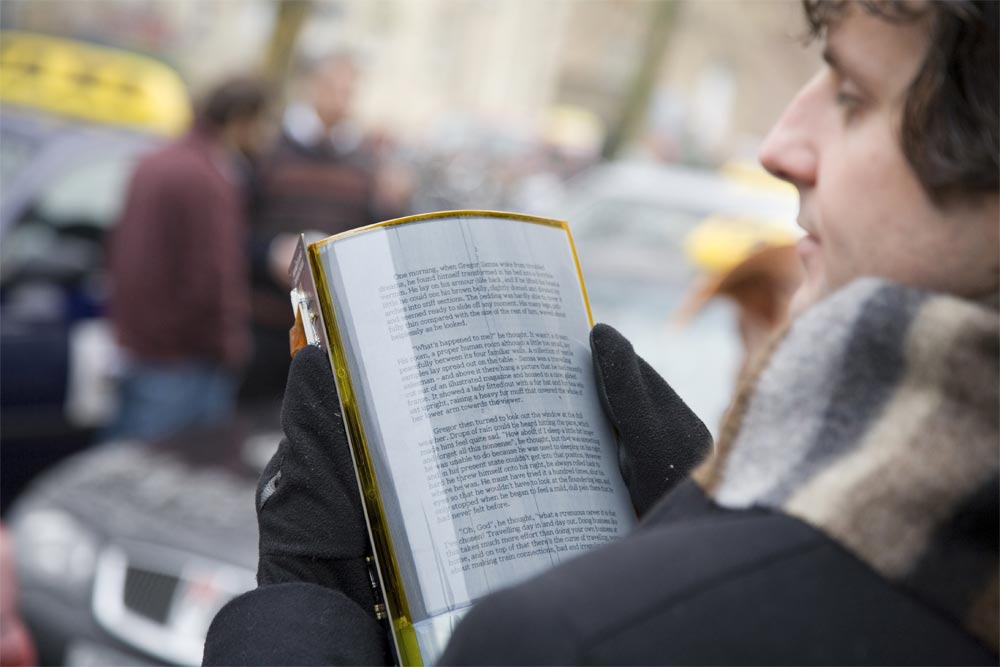Medium specificity: the difference between analogue literature and electronic literature
Medium specificity is a principle in aesthetics and art criticism. Clement Greenberg believed that “the unique and proper area of competence” for a form of art corresponds with the ability of an artist to manipulate those features that are “unique to the nature” of a particular medium. So according to him the artist should use techniques which manipulate materials to produce objects that the media in question particularly lends itself for. Or as Gotthold Ephraim Lessing puts it: “an artwork, in order to be successful, needs to adhere to the specific stylistic properties of its own medium.”
Greenberg and Lessing talk about paintings and novels, a more contemporary thinker who writes about this subject is N. Katherine Hayles. She talks about “media specific analysis”. Medium specificity suggests that a work of art can be said to be successful if it fulfills the promise contained in the medium used to bring the artwork into existence. Medium specificity and media specific analysis are playing an important role in the emergence of new media art forms, such as Internet art. Hayles mentions that since there are electronic literature of high literary merit, they deserve “the close attention and rigorous scrutiny critics have long practiced with print literature.” According to her this requires “new modes of analysis and new ways of teaching, interpreting, and playing.” She believes that the most important thing is the necessity to “think digital”.
In order to establish some characteristic properties of digital literature I will analyse three examples of literature and I will focus my analysis on reader experience.
The first example which I will analyse is These Waves of Girls by Caitlin Fisher. This story uses the hyperlink; in the same way as we surf on the net; this story is read by the clicking on links. The reader has a lot of freedom while reading the story; the reader can choose on which word he/she wants to click. This story can be read in several ways.
An electronic story which uses the hyperlink another way is The Jew’s Daughter by Judd Morrissey. In this story there is only one text, the text changes when the reader clicks on a link: a blue word. In this story the text does not change in his entirety, which is the case in the last example. Only one part of the text changes, every time a different part.
The author Tonnus Oosterhoff has a website with several flash movies of poems. The freedom of the speed of reading is limited for these poems. In this way the reader experiences a passive way of reading; the reader is not offered any choice in the reading. In the poem Slaaplied sometimes one word appears on the screen, sometimes several. The words of the poem also disappear; in this way you can’t reread them. Sometimes one word or several words appear in a section of the text that the reader already read. In the poem there are words which don’t appear immediately in total; first one part of the word appears, such as ‘de vin’, the word is expanded into ‘de vingers’. In this example the author makes use of the possibilities offered by the medium because this technique can’t be performed in a printed poem. The author uses more of these techniques; he erases and changes some words.
In conclusion electronic literature changes the experience of the reader. This is caused by the possibility of including different media such as sound and film and the use of hyperlinks. Analogue literature is usually read in a linear way; there is only one way to read the story. However there are exceptions to this rule such as the poem Kwartetspel by Judith Herzberg. This poem can be read in several ways because about half of the sentences are written in italics. The reader can decide to read the poem in total, only the sentences that are written in italics or only the sentences not written in italics.
Resources:
Greenberg, C., ‘Towards a Newer Laocoon’, Partisan Review, volume 6 (1940).
Lessing, G., ‘Laokoon’ (London: Bell, 1914).
Hayles, N. K., ‘Electronic Literature: What is it?’ (http://eliterature.org/pad/elp.html).


